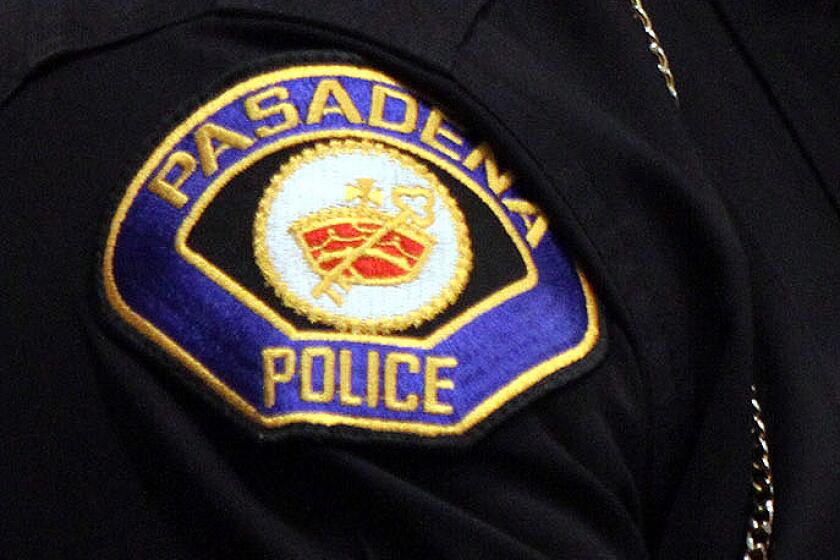Credibility Is the Issue : Information Has Been Wrongfully Withheld, and Evidence Does Exist of Serious Threats
- Share via
It’s official. An investigation by the California Department of Toxic Substance Control, ordered by Gov. Gray Davis in response to complaints I raised at the urging of my constituents, has confirmed that the Department of Health Services wrongfully withheld from the public and from public health investigators a 1997 cancer survey of the communities near the Rocketdyne corporation’s Santa Susana Field Laboratory.
Further, it’s clear from the report that health services was far more forthcoming and cooperative with Rocketdyne, offering the corporation advance notice of its activities, than it was with an oversight panel convened by the state. That panel found alarming levels of risk for certain cancers among Rocketdyne employees.
The community’s concerns, it seems, are well-founded. The evidence shows that residents of Los Angeles and Ventura counties in the Simi Valley / Santa Susana Mountains area may face a threat of serious contamination of their communities by toxic chemicals and radioactive substances. The contaminants are byproducts of the rocket building and testing work conducted by Rocketdyne, a division of Boeing Co.
It was first disclosed in 1997 that the health services department possessed files containing never-revealed surveys showing an elevated incidence of cancer in the areas bordering the site. In response to public outcry, two oversight panels, comprised of independent scientists, government representatives and the union representing Rocketdyne workers, were created to ensure that the study and cleanup of the site would be thorough and unimpeachable.
One of those panels brought in outside researchers from UCLA to conduct two separate health studies of Rocketdyne workers. Both studies found that Rocketdyne employees at various sites in the plant had increased risk for several kinds of cancers, including leukemia, lymphoma and cancers of the stomach, liver, bladder and kidneys.
Then, earlier this year, just when we thought that the full extent of the problem had been uncovered, another cancer survey was discovered hidden in health services department files. This survey showed increased cancers among residents in the areas bordering the site. To put it mildly, the residents’ trust in the credibility of Rocketdyne and the health services department has seriously deteriorated.
For years, since the release of the worker studies and, with renewed vigor after the latest cancer survey discovery, I and a number of dedicated community members and health officials have been writing and calling our state’s executive branch, looking for action. This year, Gov. Davis responded. He directed the California Environmental Protection Agency to conduct an independent investigation of the cancer study of 1997. It was this investigation that recently concluded that the health services department violated the intent and spirit of the California Cancer Registry guidelines in failing to release the survey to the community and other health researchers.
Meanwhile, the cleanup of what we now know to be highly contaminated land is stalled because of a battle over jurisdiction by two federal agencies. The U.S. Department of Energy (DOE) has primary jurisdiction over the site, but the U.S. Environmental Protection Agency, thanks to a complex interplay of environmental protection laws, can also have a say in how the cleanup proceeds. EPA cleanup standards are up to 10,000 times more protective of human health than are DOE’s regarding the risk of cancer to future residents living on the site. Rocketdyne has attempted to exert influence in various government bodies to ensure that the lower DOE standards are adopted.
The EPA has already discovered disconcertingly high levels of mercury, antimony and radiation in the soil. Rocketdyne is asking that several sites be released for general use, which would allow the land to be sold and possibly used for parks or housing.
Before this happens, I urge that we do everything possible to see that there is no remaining uncertainty about the land’s fitness for use. The communities surrounding Rocketdyne have done everything possible to create a business-friendly environment. Now Rocketdyne has to do its part. This company, unwittingly, I’m sure, has made a dangerous mess. It ought to be a good neighbor and clean it up using strict EPA standards. Nothing less would be good enough.
The residents and business owners in Los Angeles and Ventura counties have invested years of their lives, along with their life savings, in the properties they own and rent adjacent to the Rocketdyne site. They deserve to have that investment respected by their neighbors and protected by the officials they pay to represent them.
At the state level, it has become clear that the health services guidelines must be more explicit and demanding with regard to the agency’s responsibility to report possible environmental risks to all interested parties and to make sure that everything is done to assess and eliminate public health risks due to environmental contamination. At the federal level, Sen. Dianne Feinstein (D-Calif.) and the EPA have provided crucial help.
But just as it was community vigilance that brought this problem to our attention and that gave rise to the investigation that confirmed our worst fears, we will need continued community vigilance to help us follow through.
Democratic Assemblywoman Sheila James Kuehl represents portions of the San Fernando Valley and Westside.
More to Read
Sign up for Essential California
The most important California stories and recommendations in your inbox every morning.
You may occasionally receive promotional content from the Los Angeles Times.













